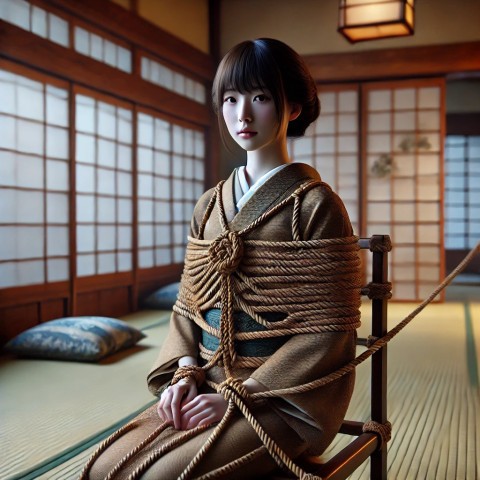Shibari, a term that translates to "tying" or "binding" in Japanese, is an ancient art form that has captured the fascination of people worldwide. Far more than just a method of restraint, shibari is a deeply symbolic and aesthetically driven practice that intertwines art, sexuality, and emotional connection.
The Origins of Shibari
Shibari’s roots can be traced back to Hojojutsu, a martial art used by samurai warriors during the Edo period (1603-1868). Hojojutsu involved the use of ropes to capture, restrain, and transport prisoners. The intricate patterns of the rope were not only functional but also designed to display the rank and status of the captive, as well as to induce psychological submission.
As time passed, the martial aspects of hojojutsu evolved, and the techniques were adapted into what we now know as shibari. During Japan’s Taisho and Showa periods, these practices transitioned from warfare to the realm of eroticism. In the underground world of kabuki theater and in the works of ukiyo-e artists, the aesthetics of binding became a symbol of forbidden desires and a powerful form of expression.
The Aesthetic and Emotional Appeal of Shibari
Unlike other forms of bondage that may focus solely on restraint, shibari is an art form that places a significant emphasis on the visual beauty and the emotional experience of the participants. The ropes are carefully arranged in intricate patterns that enhance the natural curves of the body, creating a visually striking tableau. Each knot and line of rope is placed with intention, turning the human body into a living canvas.
But shibari is not just about the visual aspect. The practice is deeply rooted in the emotional and psychological connection between the rigger (the person tying) and the model (the person being tied). Trust, communication, and consent are crucial elements. The act of tying and being tied is often a meditative experience, where both participants enter a space of vulnerability and mutual respect. The sensation of the ropes against the skin, the gradual restriction of movement, and the rhythmic process of tying can evoke a range of emotions from calm and serenity to intense arousal.
Shibari in Modern Culture
In contemporary Japan, shibari has found its place both as a performance art and within the world of BDSM. Public shibari performances are often held in art galleries, clubs, and festivals, where the practice is showcased as an intricate dance of rope and body. The performances can be intensely personal, with the rigger and model engaging in a silent dialogue through the ropes, or they can be highly stylized, drawing on elements of traditional Japanese theater and modern avant-garde art.
Outside of Japan, shibari has gained popularity in Western BDSM communities. Workshops and classes on shibari are now common in many cities worldwide, where people learn the techniques and philosophy behind the art. However, it is important to recognize that shibari is not just about technique; it is about the connection between the individuals involved and the shared experience of vulnerability and power.
The Philosophy Behind the Ropes
At its core, shibari is about more than just physical restraint. It is a practice that embodies the Japanese aesthetic principles of wabi-sabi (the beauty of imperfection) and mono no aware (an awareness of the impermanence of things). The ropes, with their rough texture and natural fibers, contrast with the smoothness of the skin, creating a visual and tactile experience that is both beautiful and ephemeral.
The temporary nature of the rope marks, which fade after the session, serves as a reminder of the fleeting nature of beauty and experience. The process of tying and untying is a metaphor for the transitory nature of life itself each moment, each knot, is unique and cannot be replicated.
Shibari as an Art and a Connection
Shibari is a practice that transcends its origins as a method of restraint. It is an art form that combines beauty, emotion, and connection in a way that is uniquely Japanese. Whether performed as a private, intimate act or as a public display of artistic expression, shibari remains a powerful way to explore the dynamics of power, trust, and the human form.
For those interested in exploring shibari, it is essential to approach it with respect, knowledge, and care. As with any intimate practice, consent and communication are paramount. With the right mindset and preparation, shibari can be a deeply fulfilling and transformative experience for all involved.













